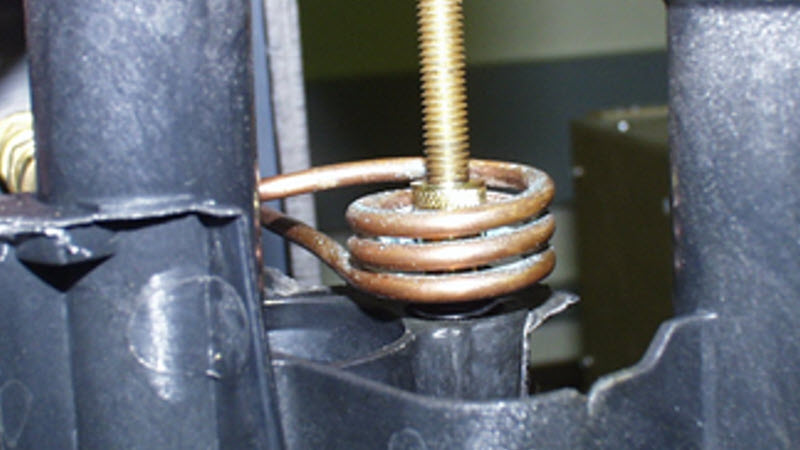Induction Brazing an Aluminum Assembly
Objective A company wanted to assess using induction heating for their aluminum assembly brazing process, and contacted THE LAB at Ambrell to utilize...
Applications
Applications: More
Applications: More

Industries:
Industries: More
Industries: More
Industries: More

Products:
Products: More
Services:
Services: More

Learn:
Learn: More
About:


An company came to THE LAB at Ambrell needing to insert brass threaded inserts into seven locations on a plastic thermostat housing. THE LAB determined that an Ambrell EASYHEATTM 3.5 kW induction heating system would be the right solution for their heat staking application. Three different coils for varying patterns were designed by Ambrell's team of applications engineers and used during testing.
A three-turn oblong coil was used to heat two brass inserts in close proximity. The inserts are heated in the coil above the insertion hole for 10 seconds to reach 700 ºF (371 ºC). The inserts are then pushed into the holes for placement. The second hole pattern requires a two place, three turn coil and the third pattern requires a three place, three turn coil. All three applications reached 700 ºF (371 ºC) in 10 seconds and can be heated using three 3.5 kW EASYHEAT units.
Induction heating offers several benefits when compared to methods such torch heating. Speed can be one factor. Additionally, precision and repeatability are considerable benefits, as induction delivers consistent results every time while a torch is dependent on the operator. This was a considerable benefit to this client. Induction can also enable simplified fixturing, as it did here. Finally, eliminating an open flame in the work environment enhances safety in the workplace while also introducing less heat into the work environment.
To read other metal-to-plastic (heat staking) application notes from THE LAB at Ambrell, visit our metal-to-plastic insertion applications page. And, if you have a heating application that would benefit from free parts testing from THE LAB, fill out our parts testing form to get the process started.

Objective A company wanted to assess using induction heating for their aluminum assembly brazing process, and contacted THE LAB at Ambrell to utilize...

Induction heating is a process that uses electromagnetic fields to heat electrically conductive materials. It has been used in numerous industries...

Induction heating, a process that uses electromagnetic induction to heat electrically conductive materials, is often thought of for large industrial...